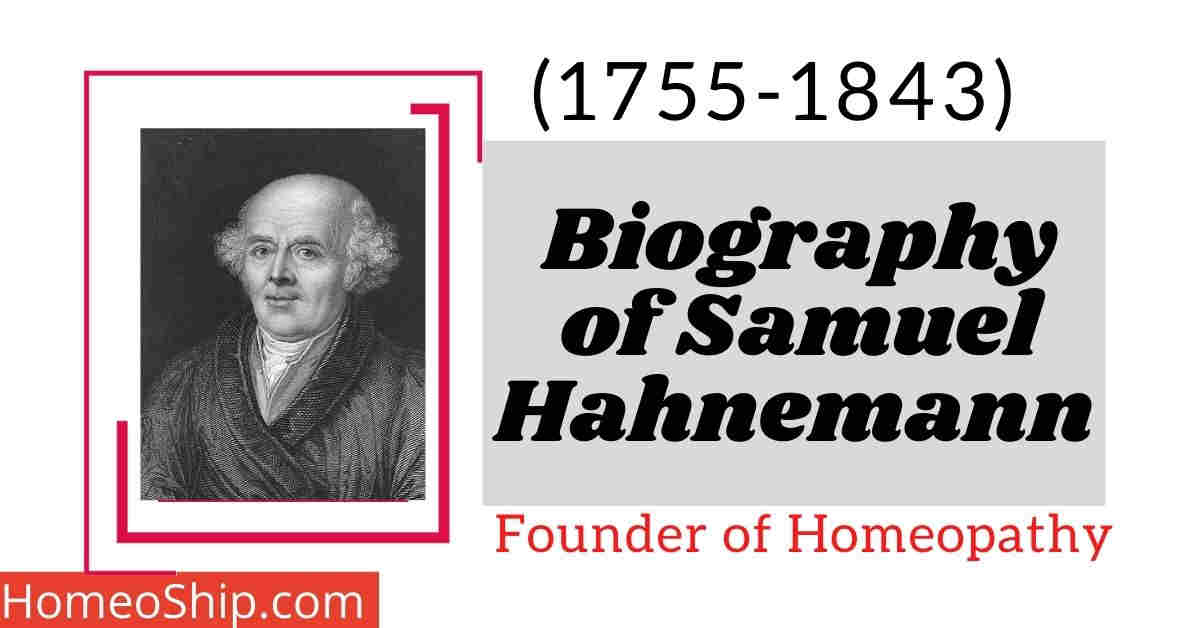Contents
Hahnemann’s Experiences Regarding Repetition of Dose (acc. to 5th Edition)
1. 30th potency is the best for a well-chosen homeopathic remedy for repetition of dose in both acute and chronic diseases. The administered dose is allowed to complete its duration of action fully especially in chronic disease. Till then, administration of any new remedy or the repetition of the same old remedy is not allowed.
2. The continued improvement in the condition of the patient always contraindicates any repetition of the remedy. The dose can be repeated only if the improvement ceases.
3. After much experimentation with the 30th potency and the lower potencies, Hahnemann concluded that – a well-selected homeopathic remedy can be repeated in its 30th potency in robust persons at a span of several days. But in weaker and more excitable persons, the remedy can be repeated every nine, twelve, or fourteen days.
4. Acute diseases bear repetition of the doses very well. In acute cases, the remedy can be repeated at every 4, 8, 12, 16, and 24 hours duration. In severe cases, even hourly once repetition is also allowed. In acute cases, the frequency of repetition depends upon the severity and nature of the disease.
5. A pure syphilitic case requires a single dose of Mercurius 30. In some cases, the same medicine can be repeated, if required, every 6 to 8 days once.
6. Repetition can be continued till any new symptoms develop in the patient. If new symptoms are observed, it indicates that the remedy is not suitable for the case and a new remedy has to be selected based on the present totality.
Hahnemann’s View Regarding Repetition of Dose (acc. to 6th Edition)
Hahnemann declares in the footnote to § 246, “What I said in the fifth edition of Organon, in a long foot note to this paragraph in order to prevent these undesirable reactions of the vital energy , was all that the experience I then had justified. But during the last four or five years, however all these difficulties are solved by my new altered but perfected method. The same carefully selected medicine may now be given daily and for months, if necessary in this way namely after the low degree of potency has been used for one or two weeks in the treatment of chronic diseases, advance is made in the same way to higher degrees.”
Hahnemann warns the physician to be careful in 3 steps while selecting the homeopathic remedy:
1. Firstly, in the selection of the perfectly homeopathic remedy.
2. Secondly, medicine must be given in highly dynamized, if necessary dissolved in water and in proper small doses.
3. Finally, the medicine has to be repeated carefully depending upon the requirement and careful observations.
Mode of repetition of the remedies
1. In acute diseases, the remedy can be repeated frequently depending upon the intensity of the disease.
2. In chronic diseases, a single dose of an appropriately selected homeopathic remedy at times completes the cure within 40, 50, 60, 100 days. But the aim of the physician is to achieve the cure in a rapid manner. Hence, the perfectly selected dynamized remedy by dissolving in water and given in proper small doses in a definite interval will bring about cure very faster. But Hahnemann reminds us “The degree of every repeated dose deviate somewhat from the preceding.” This is because the same potency of the remedy is no more helpful in stimulating the vital force in producing the desirable primary action (§ 246).
3. The same unchanged dose of the remedy should not be repeated, because the former dose has already stimulated the vital force sufficiently. So, vital force no longer accepts the same unchanged potency of the remedy, sometimes it can make the patient sick.
4. Hence, the succeeding dose is changed slightly every time and its potency is somewhat higher. Now, the vital principle will be altered or stimulated again and thus the cure is brought nearer (§ 247). The best selected homeopathic remedy has to be repeated only with the improved dynamization of the potency at every repetition. Such procedure can be followed if required, several times (footnote to § 247).
5. This procedure of improving the dose and potency with every repetition can be followed in acute diseases every 2 to 6 hours duration or even often.
6. In chronic diseases, the ever-increasing dose can be repeated either every second day or may be repeated daily for months as long as the patient experiences continued improvement.
7. If new symptoms appear in this repetition, it has to be thought that the selected remedy may not be truly homeopathic and a new remedy can be selected in place of the previous one. This new remedy can be repeated in the same manner in the ever-increasing potencies.
8. Homeopathic aggravation, in any case, shows that the administered remedy is the right one and it has produced the desired response. In such conditions, the indicated remedy must be reduced and repeated in long intervals or possibly stopped for several days.
9. Schein-symptomze (§ 248): The apparent (clear) symptoms caused by the excess of the homeopathic medicine are called the Schein Symptome. These symptoms will disappear and leave the patient in undisturbed health if the medicine is stopped. Dr. Hahnemann gives two opinions to the physician in stopping the medicine. The medicine can be withdrawn either in an abrupt manner or the duration of the repetition of the medicine can be gradually increased and thus stopped totally in a span of time.
10. In such cases, Hahnemann recommends the olfactory method as a follow-up. A small dram of dilute alcohol into which one globule of properly succussed medicine is added. Such olfaction can be given to the patient every 2, 3, or 4 days once (§ 248), but succussing 8 to 10 times at every use.
11. Any medicine that produces new symptoms in a patient cannot cure him. Hence, its action has to be neutralized as early as possible with the help of antidote medicine. Later, a well-chosen remedy for the existing totality must be given immediately in place of the improperly chosen one (§ 249). 12. An intelligent, accurately observing physician can identify the badly chosen remedy within 6, 8, or 12 hours of its administration, especially in acute cases. Then he replaces the proper one in the place of the wrongly chosen one (§ 250).
13. Certain drugs like Ignatia, Bryonia, Rhus tox, and sometimes Belladonna produce alternating actions, a kind of symptoms of primary activities that are opposite to each other. In our practice, after prescribing these remedies on strict homeopathic principles if no improvement follows, the same medicine can be repeated afresh and in equally small doses. Sometimes such practice can bring about improvement.
In acute cases, if such remedies are selected, a second dose of the same remedy may be administered within a few hours after employing the first dose (§ 251).
Also, Read Hahnemann’s Classification of Diseases in Homeopathy



